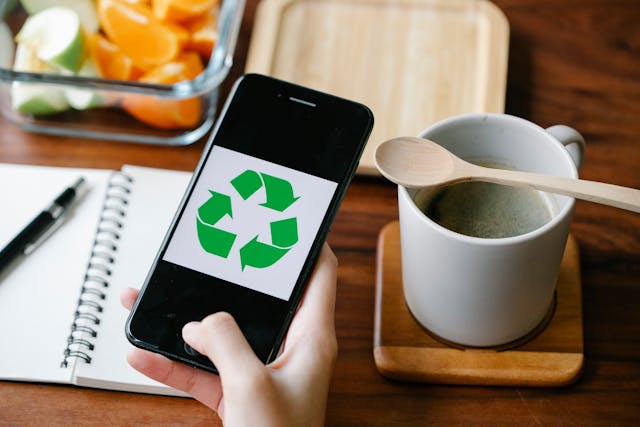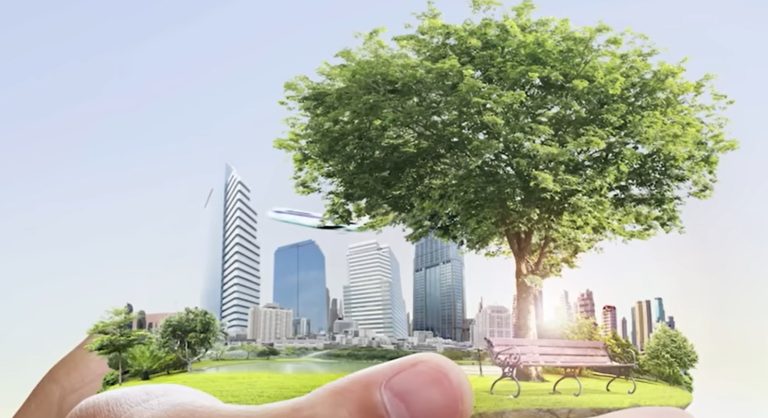There is a growing urgency to adopt a more sustainable lifestyle. As we face the pressing challenges of climate change and resource depletion, making eco-friendly choices has never been more critical. This shift involves changes in various aspects of our lives, including our homes and daily habits. Embracing a sustainable lifestyle not only benefits the planet by preserving vital resources but also reduces utility bills, especially in cities like Dallas, where costs are 14% higher than the national average.
So, for all those who want to play their part in saving the future and improving their lives, this article serves as your ultimate guide to living sustainably.

- Energy-Efficient Lighting
Switching to energy-efficient lighting is a simple yet impactful change. LED bulbs are a fantastic alternative to traditional incandescent lights. They consume less energy and last much longer, making them a cost-effective choice for homeowners. By replacing all the bulbs in your home with LEDs, you can reduce your energy consumption and lower your electricity bills. This change not only benefits your wallet but also reduces the demand on power plants, decreasing greenhouse gas emissions. The long lifespan of LED bulbs means fewer replacements and less waste, contributing to a more sustainable lifestyle.

- Sustainable Bathroom Upgrades
One of the most effective ways to start your journey toward a sustainable lifestyle is by upgrading your bathroom. Installing low-flow showers and fixtures can significantly reduce water usage without compromising on performance. In Dallas, where the climate is hot and humid during summers, conserving water is crucial. Low-flow showers use less water, which reduces the strain on local water supplies and lowers your utility bills. Additionally, opting for an experienced and well-reputed Dallas shower replacement company ensures that these installations are done correctly, maximizing their efficiency and lifespan. Professional installation also helps avoid potential leaks and water damage, providing peace of mind and long-term savings.
- Water Conservation in the Kitchen
The kitchen is another area where you can save water. Investing in water-efficient dishwashers and faucets can drastically reduce water usage. Modern dishwashers, for instance, use less water than washing dishes by hand, provided they are fully loaded. Promptly fixing any leaks in the kitchen can also prevent water wastage. Even a small drip can waste gallons of water over time. These water conservation measures not only help protect our precious water resources but also reduce your utility bills, making your home more sustainable and cost-effective.

- Sustainable Transportation
Transportation is a major contributor to carbon emissions, and making sustainable choices in this area can reduce your carbon footprint. Opt for public transportation, biking, or walking instead of driving. If driving is necessary, consider switching to an electric or hybrid vehicle. These vehicles produce fewer emissions compared to traditional gasoline-powered cars and are becoming increasingly affordable and accessible. Reducing your reliance on fossil fuels not only benefits the environment but also lowers fuel costs and reduces your overall transportation expenses.
- Eco-Friendly Home Insulation
Proper home insulation is essential for maintaining energy efficiency. By insulating your home, you can reduce the need for heating and cooling, leading to lower energy consumption and utility bills. There are various sustainable insulation materials available, such as cellulose, wool, and recycled cotton. These materials are not only effective in regulating indoor temperatures but also environmentally friendly. Proper insulation keeps your home comfortable year-round, reduces energy waste, and lowers your carbon footprint. It’s a win-win for both the environment and your wallet.
- Waste Reduction and Recycling
Waste reduction and recycling are fundamental to a sustainable lifestyle. Start by minimizing the waste you produce. This can be achieved by avoiding single-use plastics, buying in bulk, and opting for products with minimal packaging. Implementing a robust recycling system at home is also crucial. Sort your waste into recyclables, compostable items, and general waste. Composting organic waste, such as food scraps and yard clippings, reduces the amount of waste sent to landfills and produces nutrient-rich soil for gardening. By practicing waste reduction and recycling, you decrease the strain on landfills, reduce pollution, and conserve resources.
- Renewable Energy Sources
Harnessing renewable energy sources is a powerful way to live sustainably. Installing solar panels on your roofis a popular and effective way to reduce your reliance on fossil fuels. Solar energy is a clean, renewable resource that reduces greenhouse gas emissions and lowers your electricity bills. In addition to solar panels, consider wind energy if feasible for your location. Wind turbines, although less common for residential use, can also provide substantial energy savings. By investing in renewable energy, you contribute to a greener future, reduce your carbon footprint, and enjoy long-term financial benefits through lower energy costs.
- Sustainable Gardening
Sustainable gardening practices can make a big difference in your ecological footprint. Start by growing your own vegetables and herbs. This not only provides fresh, organic produce but also reduces the carbon emissions associated with transporting food. Opt for native plants that require less water and are better adapted to your local climate. Xeriscaping, a landscaping method that reduces the need for irrigation, is particularly beneficial in areas prone to drought. These practices conserve water, reduce the need for chemical fertilizers and pesticides, and support local biodiversity.
- Conscious Consumerism
Conscious consumerism involves making informed and ethical choices when purchasing products. Support brands that prioritize sustainability, use eco-friendly materials, and practice fair labor standards. Buying locally-produced goods reduces the carbon footprint associated with transportation. Avoid fast fashion and opt for durable, high-quality clothing that lasts longer. By choosing products that are made responsibly and sustainably, you promote ethical business practices and reduce your environmental impact. Ultimately, conscious consumerism encourages companies to adopt more sustainable methods and helps create a demand for greener products.
- Green Cleaning Products
Switching to green cleaning products is an easy yet impactful way to reduce your household’s environmental footprint. Conventional cleaning products often contain harmful chemicals that can pollute waterways and harm aquatic life. Instead, opt for natural, non-toxic cleaning solutions. Many eco-friendly cleaning products are available on the market, but you can also make your own using simple ingredients like vinegar, baking soda, and essential oils. These alternatives are just as effective as conventional cleaners but are safer for your health and the environment. Green cleaning products help maintain indoor air quality and reduce chemical exposure.
Conclusion
Adopting a sustainable lifestyle requires thoughtful changes across various aspects of daily living. From low-flow showers for water conservationto using green cleaning products, all the practices outlined in this article collectively contribute to a healthier planet and cost savings. As environmental challenges grow, it’s crucial to adopt sustainable habits to preserve resources and reduce our ecological footprint. Each small step towards sustainability has the power to make a difference and keep our planet healthy and resilient for future generations.




